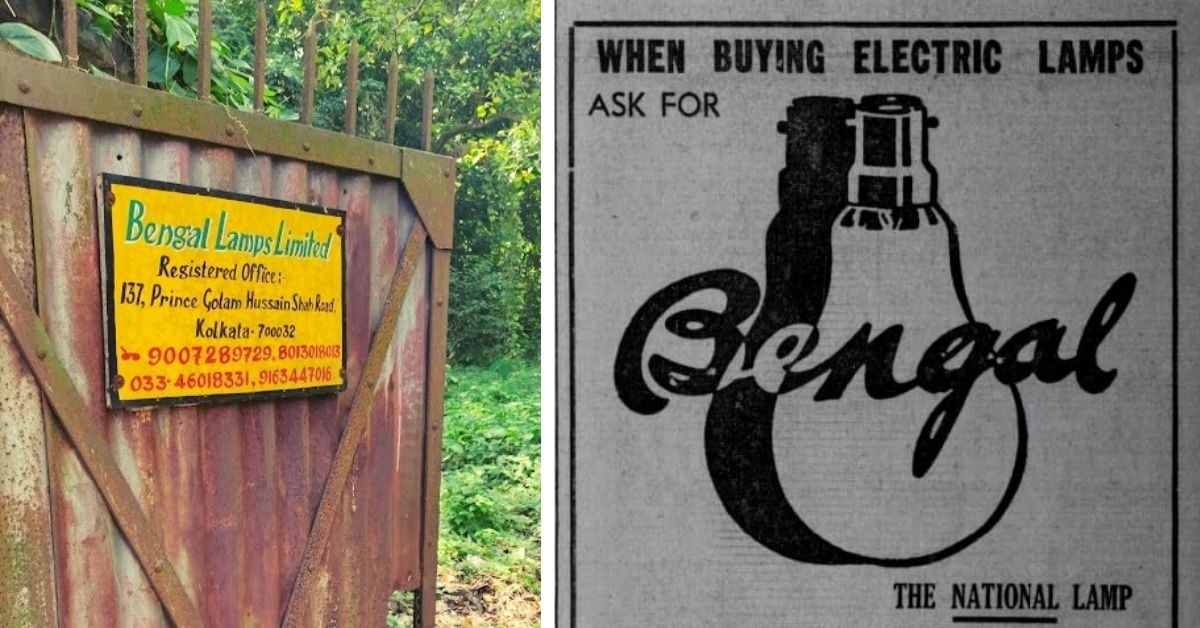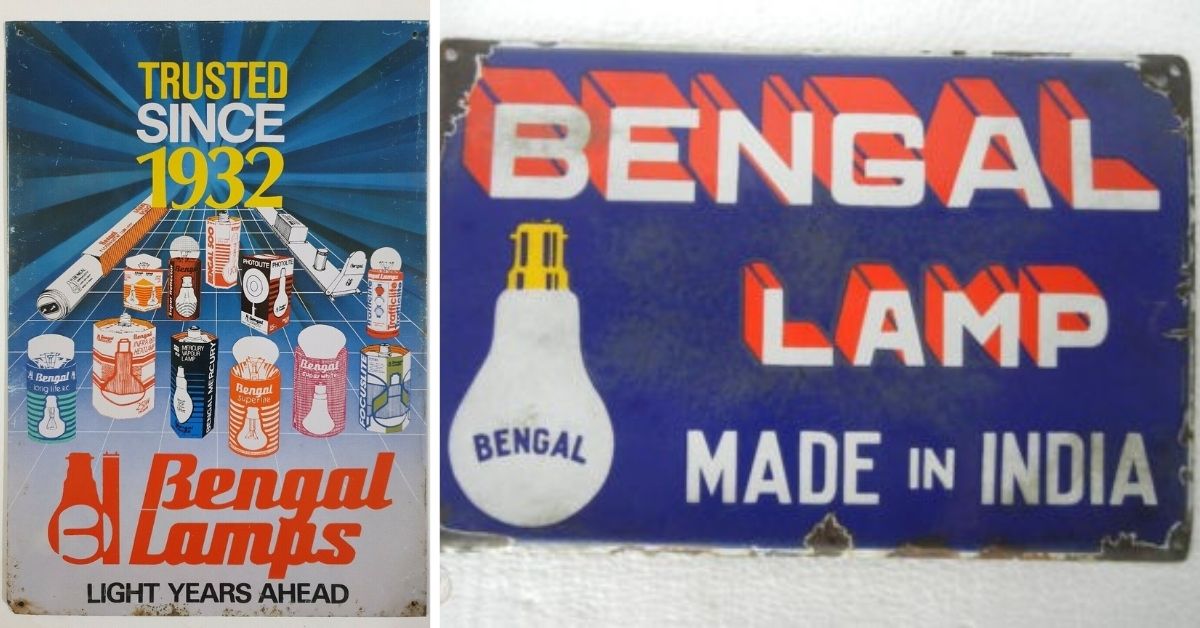India’s 1st Swadeshi Electric Bulb Company Was Philips’ Top Competitor in The 1930s
Three brothers Suren, Kiran and Hemen Roy started the Bengal Lamps Ltd in Kasba, Calcutta, to manufacture and sell swadeshi electric bulbs

The 8-B bus stop near Jadavpur University in Kolkata is known for many things. Be it the year-long rush of students huddled near the photocopier shops, the tiny tea-stalls serving as a platform for socio-political and intellectual discourses or the hustle by shoppers during the annual chaitra sale — every nook and corner has a story to tell.
A lesser known one among them is that of Bengal’s illustrious entrepreneurial past. A little southward from the bus stop, near the Jadavpur University Gate 4, stands the forgotten structure of Bengal Lamps Limited.
It was the first swadeshi company to manufacture electric bulbs in India.
Illuminating the streets of Calcutta

Back in the 19th century, after sundown, streets of Calcutta, especially the European quarters, were illuminated with warm gas lights. This practice however changed on 24 July 1879 when P W Fleury And Company gave the first demonstration of electric lights as a better alternative.
This was followed by the use of carbon arc lamps that use an electric arc or voltaic arc to produce light. It was found to be more commercially efficient to light up public areas than other lamps.
Owing to this, the British government in Bengal, passed the Calcutta Electric Lighting Act in 1895, providing it the first license for 21 years. The carbon arc lamps were then installed in an area covering 5.64 sq miles. This area has now expanded to 567 sq km, according to a brochure by Calcutta Electric Supply Corporation (CESC).
In the meantime, a Hungarian company called Tungsram discovered the tungsten filament lamp and it was first marketed in Europe in 1904. As the capital of India, Calcutta was one of the first among the British colonies to receive these tungsten filament lamps. These were imported from Europe to light up the city but unfortunately they failed to garner popularity among the city-dwellers, who continued to prefer gas and carbon arc lamps.
It continued until 1930, when Philips Electric Company (India) arrived to completely monopolise the market of illumination business in India. With 75 employees and an office established on 32 Chowringhee Road, they were on a mission to rule the market between 1930-1941.
But this was the same time when nationalist sentiments were on a rise and a revolution began to brew, especially among the middle class. With the swadeshi movement picking pace, Indians were boycotting foreign goods in favour of Indian products, as a form of protest against the colonisers.
Philips, despite its lofty ambitions, being a foreign company also suffered heavily in sales.
The Swadeshi Light

Although in 1885, a company led by Bengali entrepreneurs, Dey, Sil & Co. was launched to provide illumination for marriage processions, nothing substantial was being done in the mainstream by swadeshi businessmen.
Recognising this demand and opportunity for a swadeshi alternative to these bulbs, three brothers — Suren, Kiran and Hemen Roy started the Bengal Electric Lamp Works in the 1930s, in Kasba to manufacture and sell electric bulbs.
Natives of Dhaka (capital of present-day Bangladesh), they were from a zamindar family and had studied electrical engineering from foreign universities. Suren and Kiran were working as professors at the Faculty of Engineering College in Jadavpur, while Hemen was an administrator, when the trio decided to launch the business in undivided India.
Unlike the gas lamps, the carbon arc lamps or the Philips bulbs that were installed only in urban areas resided or frequented by the European settlers, the Bengal Lamps bulbs were aimed to cater to Indians from middle-class and lower middle-class backgrounds. Additionally, their focus was not only to light up the streets of Calcutta but also establish reach in local households.
Bengal Lamps offered bulbs of superior quality at an affordable price. In just a few months, fueled by the Swadeshi movement, their sales picked up threatening even the monopoly of the foreign company Philips. As demand plummeted, their establishment in Kasba wasn’t enough and so they started a second factory in Jadavpur.

For many years, the Bengal Lamps continued to dominate the market, providing employment opportunities to many Bengali youth. Their popularity rose and they became a national brand in the 1970s, after establishing their factory in Bangalore (present-day Bengaluru).
However, with rising competition from newer companies in the electric bulb business, Bengal Lamps began to falter. From building market pressures, financial hiccups and controversies with management and workers’ union, the company faced several challenges and eventually shut down in 1989.
This company was once among the first few that ushered the swadeshi movement to topple Britain’s economic hold on India. In tatters today, the brick brown doors and the Bengal Lamps Pukur (meaning: pond) are the only remnants of its glorious industrial past.
Featured image credit: Prasenjit Halder
Edited by Yoshita Rao
If you found our stories insightful, informative, or even just enjoyable, we invite you to consider making a voluntary payment to support the work we do at The Better India. Your contribution helps us continue producing quality content that educates, inspires, and drives positive change.
Choose one of the payment options below for your contribution-
By paying for the stories you value, you directly contribute to sustaining our efforts focused on making a difference in the world. Together, let’s ensure that impactful stories continue to be told and shared, enriching lives and communities alike.
Thank you for your support. Here are some frequently asked questions you might find helpful to know why you are contributing?


This story made me
-
97
-
121
-
89
-
167













